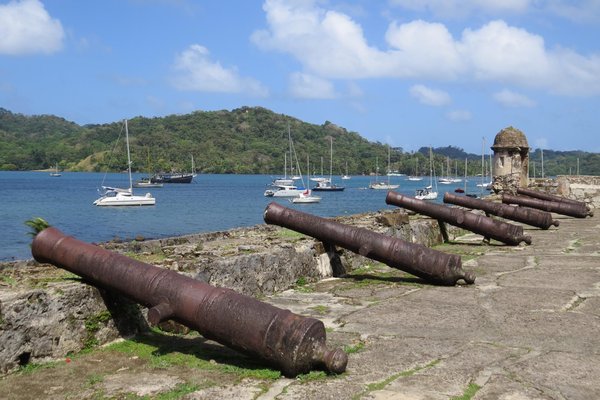Panama
Portobelo-San Lorenzo
The Fortifications on the Caribbean Side of Panama: Portobelo-San Lorenzo form part of the defence system built by the Spanish Crown to protect transatlantic trade.
They are magnificent examples of 17th- and 18th-century military architecture. The forts, castles, barracks and batteries of Portobelo created a defensive line around the bay and protected the harbour; the works at San Lorenzo guarded the mouth of the Chagres River.
Community Perspective: “It is the kind of place where nothing changes” sums it up nicely for Portobelo, or you may even call it neglect. Shandos covered the other component, San Lorenzo, which has recently become easier to reach due to the building of a new bridge north of Gatun.
Site Info
Official Information
- Full Name
- Fortifications on the Caribbean Side of Panama: Portobelo-San Lorenzo (ID: 135)
- Country
- Panama
- Status
-
Inscribed 1980
Site history
History of Portobelo-San Lorenzo
- 2012: In Danger
- "site .. is deteriorating at a rate which could undermine the outstanding universal value for which it was inscribed."
- 1980: Inscribed
- Inscribed
- In Danger
- "site .. is deteriorating at a rate which could undermine the outstanding universal value for which it was inscribed." Since 2012
- Type
- Cultural
- Criteria
- i
- iv
Links
- UNESCO
- whc.unesco.org
- Related
-
- en.wikipedia.org — Link
- en.wikipedia.org — Chagres and Fort San Lorenzo
All Links
UNESCO.org
- whc.unesco.org — whc.unesco.org/
Related Resources
- en.wikipedia.org — Link
- en.wikipedia.org — Chagres and Fort San Lorenzo
Community Information
- Community Category
- Secular structure: Military and Fortifications
Travel Information
Recent Connections
-
No Map
-
Perfect Inscriptions
1980 -
Liquid Mercury
Portobelo: Was the transit port for Liq…
Connections of Portobelo-San Lorenzo
- Individual People
-
-
Sir Francis Drake
-
Christopher Columbus
Columbus is said to have named Portobelo "Puerto Bello" in 1502, when he stopped in this harbour on his 4th trip to the New World.See books.google.nl
-
- Geography
- Trivia
-
-
Built or owned by Spanish
Portobelo was founded in 1597 by Spanish explorer Francisco Velarde y Mercado (wiki)
-
- History
-
-
Camino Real
"Durante su historia desde el siglo XVI hasta el siglo XIX, el Camino Real fue, junto con el Camino de Cruces, una de las dos únicas rutas para cruzar el Istmo de Panamá. El camino, creado poco despues del descubrimiento del Mar del Sur, conectaba la ciudad de Panamá Viejo primero con Nombre de Dios y despues de 1597 con Portobelo"
-
- Ecology
-
-
Liquid Mercury
Portobelo: Was the transit port for Liquid Mercury from Almaden. "The materials that were traded were silver, mercury, among other precious metals and rich commodities."See sites.uci.edu
-
- Architecture
-
-
Coral Masonry
-
Neoclassical architecture
Antonelli's Spanish military architecture characterizes the first construction period (1596-99) and the neoclassical style of Salas and Hernandez (1753-60) dominated afterwards. (long description unesco website)
-
- Damaged
-
-
Bombarded by the British Navy
the Royal Navy bombarded the Spanish-held Todo Fierro fort and Santiago fortress in Panama during the Battle of Porto Bello in November 1739 as part of the War of Jenkins' EarSee en.wikipedia.org
-
- World Heritage Process
- Human Activity
-
-
Sea Ports
Portobelo -
Art Colonies
Taller Portobelo -
Piracy
Francis Drake 1596, William Parker 1601, Henry Morgan 1668 -
Slavery
Slaves were traded here and were used in the construction of Portobelo. There used to be a Slave Pen where now the cemetery is
-
- Constructions
-
-
Prison
Fort San Lorenzo was abandoned by Spain in 1821 when Panama became independent. After Panama became part of Colombia, the fort was used as a prison
-
- WHS on Other Lists
-
-
World Monuments Watch (past)
Portobelo - San Lorenzo Castle and San Geronimo Fort (2002, 2000, 1998), Fortifications of Portobelo (2016) -
U.S. Ambassadors Fund
Restoration of 16th-Century Colonial Bridges in Portobelo (2005)
-
- Timeline
-
-
Built in the 17th century
17th and 18th century fortifications (AB)
-
News
No news.
Recent Visitors
Visitors of Portobelo-San Lorenzo
- Adrian Turtschi
- Alberto Rodriguez Gutierrez
- Alejandro Lau
- Alex Baranda
- Ammon Watkins
- Atila Ege
- BaziFettehenne
- Bram de Bruin
- Carlos Sotelo
- chiuliqi
- Christoph
- Christravelblog
- Cobaltrage
- czesioszpachelka
- David Aaronson
- del
- Delphine Delaunay
- Dorejd
- Dwight Zehuan Xiao
- Els Slots
- Erik Jelinek
- Eva Kisgyorgy
- Fan Yibo
- Feldhase
- Filip Murlak
- Frederik Dawson
- George Gdanski
- Gernot
- Gilles
- giloudepuertorico
- HaraldOest
- Harald T.
- Harry Mitsidis
- Hdhuntphotography
- Iain Jackson
- Jarek Pokrzywnicki
- Jason Boulette
- Javier Coro
- Jean Lecaillon
- Jeanne OGrady
- Joel on the Road
- Kurt Lauer
- lichia
- Lillybett
- Ludvan
- Luis Filipe Gaspar
- Maciej Gil
- Mahuhe
- Maja
- Martin
- Michael Ayers
- nan
- Nihal Ege
- Patrik
- Philipp Peterer
- Priyaranjan Mohapatra
- Reisedachs
- Roger Ourset
- Roman Bruehwiler
- sakohju
- Sandra!
- Sergio Arjona
- Shandos Cleaver
- Slavi
- Solivagant
- Thomas Buechler
- Truls Brekke
- VMThumper
- Zoë Sheng
Community Reviews
Show full reviews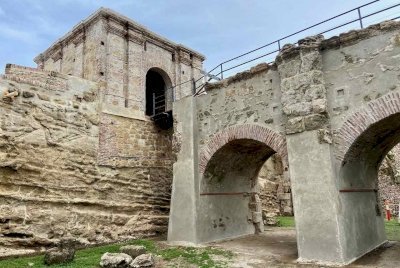
Initially when planning our stopover in Panama City (an easy and cheap option with COPA), we had planned to visit the Panama WHS and the Portobelo part of the Portobelo-San Lorenzo WHS, using public transport. But after seeing how easy driving is in the country (a whole swathe of the country was basically part of the USA for years), we decided to hire a car for the day to visit San Lorenzo and the canal.
Visiting San Lorenzo is easier than it used to be, thanks to the building of a new bridge north of Gatun, the Puente Atlantico. It's an impressive bridge to drive across, and there's no toll. Continue down the road past Fort Sherman, past the old military booth where no-one waved us down. The road is now nicely sealed all the way to San Lorenzo, at least when the road works present when we visited in June 2022 are finished.
San Lorenzo itself was also undergoing renovations. There's a new video with a version in English from early 2022 that we watched before wandering around the site, with newish signs in both English and Spanish. We joked that they were preparing the site for sound-and-light shows (about the pirates, of course), as the renovations involved more concrete than we thought was suitable. However, we noticed the restorations at Panama Viejo also involved more modifications than we expected, with signs explaining they were making the new parts distinct from the old.
The fortress by …
Keep reading 0 comments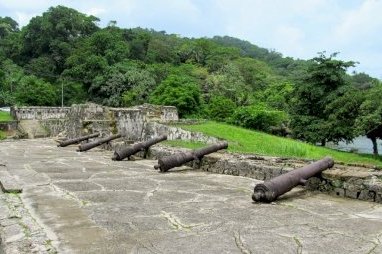
We visited Portobelo July 2019 as an easy day trip from Panama City on public transit. There is actually very little to add to the previous reviews as it is the kind of place where nothing changes. If anything it feels even more neglected. Other than a couple of local visitors we were the only ones there, which left us free to sit and imagine days gone by. The natural harbour and its strategic importance is obvious at first glance and at Portobelo there are two little fortifications (Santiago and San Jeronimo) to quickly explore. In a rush it could be seen in 10 minutes but if you are the type that enjoys history unrestored and decaying it is a great place to linger.
Changing buses in Sabanitas makes the journey quick and easy. We decided to go all the way into Colon on the return trip which was a mistake. Although it wasn't far, it easily doubled the journey time because of frequent stops and Colon itself looked very uninviting.
Keep reading 0 comments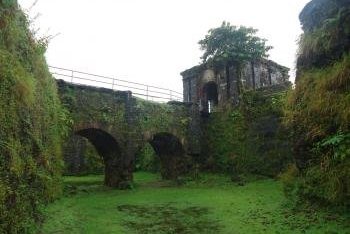
Both sites visited just recently (November 2017) with a rented car as that is the only possibility to reach San Lorenzo castle without participating in expensive organised tours.
From Colon one should folow the signs to Gatun Locks or Agua Clara (which is a new part of extended Panama Canal next to Gatun Locks). So far crossing Panama Canal is possible only through the Locks (althoug a new big bridge over the Canal is visibly going to be built). The passage is occasionaly closed due to ships going through the Canal but the crossing usually does not take longer than half an hour.
After the Locks there is an asphalted road towards Fuerte Sherman (there is a checkpoint where you should tell you are going to Fuerte San Lorenzo). A few km before the castle there is an official entrance to San Lorenzo Protected Area (5 USD per person for foreigners).
The fort itself alhough it was detroyed by Morgan and other pirates looks much better preserved than Portobelo fortifications. Full layout is still visible as well as the moat cut in the rocks. There are excellent views from castle walls (Rio Chagres, Atlantic coast). And because of relative difficulty to reach the site it is substantialy less crowded than Portobelo.
Keep reading 0 comments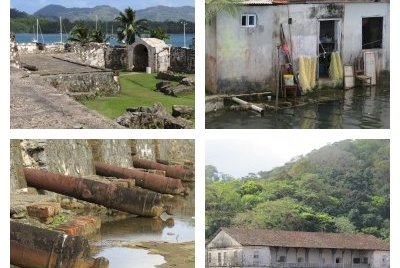
Portobelo and San Lorenzo were Spanish fortifications on the Caribbean coast of Panama. Portobelo even was the most important Spanish port of Central America in its time, the storehouse for the silver and gold that came from Peru by land or sea/river and had to be transported across the Atlantic. Both sites lie on either side of the modern city of Colón, some 80 km apart.
As most others, I only visited Portobelo. I would love to see a review of San Lorenzo on this website too, but it isn’t as easily accessible. Without a rental car, your only chance is to join a day tour from Panama City. The pricing of these tours (of any guided tour from Panama City) is ridiculous: they all seem to start at 100 US dollar. That’s the downside of Panama: due to the cruising public, a large number of western ex-pats, and the general Americanization of the country prices often bear no relation to real costs.
Fortunately, Portobelo can be reached by public transport. It cost me 5 US dollars each way, with a change of buses in the town of Sabanitas. Taking this route, you avoid Colon which has the reputation of a hellhole (though that might be an exaggeration too). Sabanitas is easy and friendly, and Diablos Rojos race by frequently to take you to Portobelo. I wasn’t the only tourist on this bus, nor in the town itself. On approach, you immediately notice the formidable natural harbour, which …
Keep reading 0 comments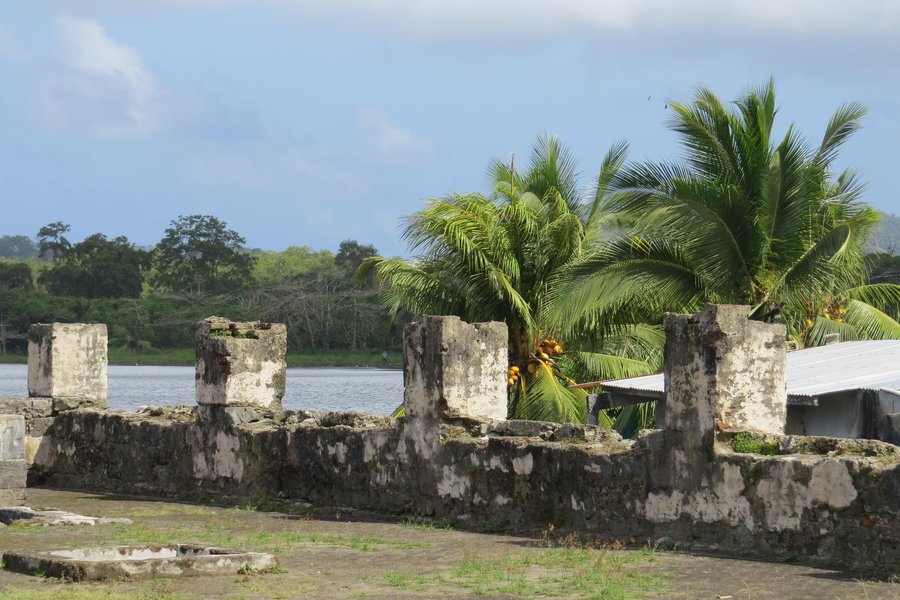
I just returned form a visit to Portobelo(Feb. 2011) The heavy rains have taken a toll on the whole area. The road to Portobelo, still had several damaged spots that slowed down traffic. The town of Portobelo had had several house destroyed by landslides with loss of lives. The Fort also suffered damage form the landslides. Parts of the wall had collapsed and huge tree trunk were still in the process of being removed. The site was undergoing repair and restoration. All in all, it is a beautiful site to visit.
Keep reading 0 comments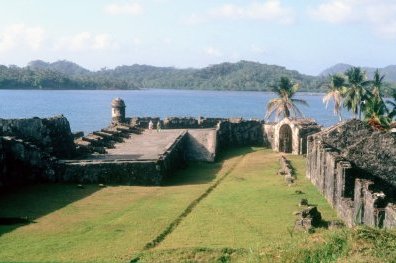
(Nb. This review is of a visit in Apr 1991 and submitted to this web site even before it started maintaining submission dates - i.e before 2005!!)
Panama has quite a lot going for it as a tourist destination – excellent bird watching and diving, the San Blas Islands (run as an autonomous province by the indigenous peoples), several colonial historical sites plus the incomparable Canal (which is not a WHS but should be even though it is not even on the Tentative list). If you have time it IS worth the detour to go the 50kms from Colon to Portobelo. This sleepy village was at one time a pivotal location within the Spanish Empire for the transport of gold to Europe, lying as it did at the Atlantic end of a stone highway from Panama City.
I quote :- “Portobelo was the port of entry and of exit for all of South America. The exchange of merchandise took place annually at Portobelo in the form of a fair which lasted from 30 to 60 days. During this time, this sleepy little place was a beehive of activity. Transactions frequently totaled from 10 to 12 million gold pesos. These fairs took place once each year until 1738 when, as a result of continual attacks by pirates, Spain was forced to abandon the Isthmian route for the longer but more secure one around Cape Horn. The frequent pirate attacks forced the Spaniards to adopt a convoy system. …
Keep reading 0 comments
